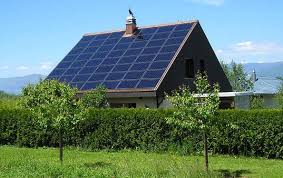Every year in April, more than a billion people around the world take action for Earth Day. The celebration of Earth Day is meant to promote knowledge about ecological investment and green energy to combat climate change and work for a sustainable future. Climate change has both stoked the fires of political posturing in the legislatures of the world and been cast aside by the general population in favour of more obvious and immediate issues.
Setting aside the debate over the validity of climate change and its importance to our society- for the purposes of this series we’ll assume that climate change IS happening at an atypical rate and that it IS effecting the population critically. Climate change is beginning to permeate the public consciousness and solidify its place in the realm of public policy. One of the ways that governments, corporations, and individuals strive to combat climate change is through the development of and investment in renewable energies. Oil and gas is the poster child for dirty energy and indifferent, solely profit-driven consumerism, and as a result the development of renewable energies is on the rise. There have been many and varied quests for a clean and cheap alternative to fossil fuels, including biofuels, geothermic systems, biomasses, wind, solar, and nuclear power.
This three-part series will focus on the development of solar and wind energy. These renewable energy sources are most rapidly growing industries that have had the most investment and most widespread application globally, and they represent the immediate future of renewable energy development.
Solar and wind power have something in common in that they are referred to as ‘intermittent’ energy sources; which is to say that they are dependent on environmental conditions. Solar and wind power can only be harnessed when it is actually sunny or windy, therefore requiring a more reliable, and often more ‘dirty’ form of energy to serve as a backup. In a northern country during the winter, solar power is not reliable and cannot be used during dark hours- the times when people want to use electricity the most. Wind power can be even more inconsistent as it depends on when and how fast the wind blows. However, they are also the two fastest growing forms of renewable energy and are the target of the most private and public investment.
Both solar and wind power are the industry darlings of renewable energy; on the surface, they seem to be about as ‘green’ as you can get. However, there are many hidden costs and risks to solar and wind power, and these two renewables are not as green, clean, or efficient as many would like to believe.
Making solar cells more efficient is imperative if solar power is to be the solution to the dirty energy problem.
Before continuing, it is useful to delineate the difference between energy and power. Energy is the ability to do work; power is the rate at which that work gets done.

Power density is the energy flow that can be harnessed from a given unit of volume, area, or mass- as in how much power can you get from a certain piece of real estate. Oil, natural gas, and coal all have high power density, meaning you can get more power from a smaller unit. Solar and wind power have a higher power density than some forms of renewable energy, like biomasses, but cannot compete with their ‘dirtier’ cousins in the oil and gas family. To put things in perspective, a marginal oil or gas well has a power density 22 times that of a wind turbine.
This leads to the second problem with wind and solar power; storage. Wind and solar power require a lot more physical space to generate energy, and as global demand for energy continues to increase, it seems unlikely that these renewables will be able to generate enough supply to keep up with demand, especially in large metropolitan areas where population density is high. Most commercial solar panels are not very efficient- they harness only 5-25% of the sun’s radiation. The most efficient solar cells, both in terms of power density and amount of solar radiation converted, are compound cells that can convert up to 44.4% of solar radiation into energy, but are currently only used in space satellites and are hugely expensive.
Every roof in Manhattan could be plastered with commercial solar panels and still wouldn’t meet total energy demand for the area; and as populations continue to migrate from rural areas to cities, increasing population density, making solar cells more efficient is imperative if solar power is to be the solution to the dirty energy problem.

Wind turbines suffer from a similar efficiency problem. Most turbines harness between 30%-40% of potential wind energy and could at most get to 59%. In addition, wind turbines require even more space than solar panels and many groups are resistant to the construction of fields full of windmills for aesthetic reasons.
Despite the issues inherent in the application of wind and solar energy, there is significant room for improvement, both technologically and politically, which will be discussed later in this series.




